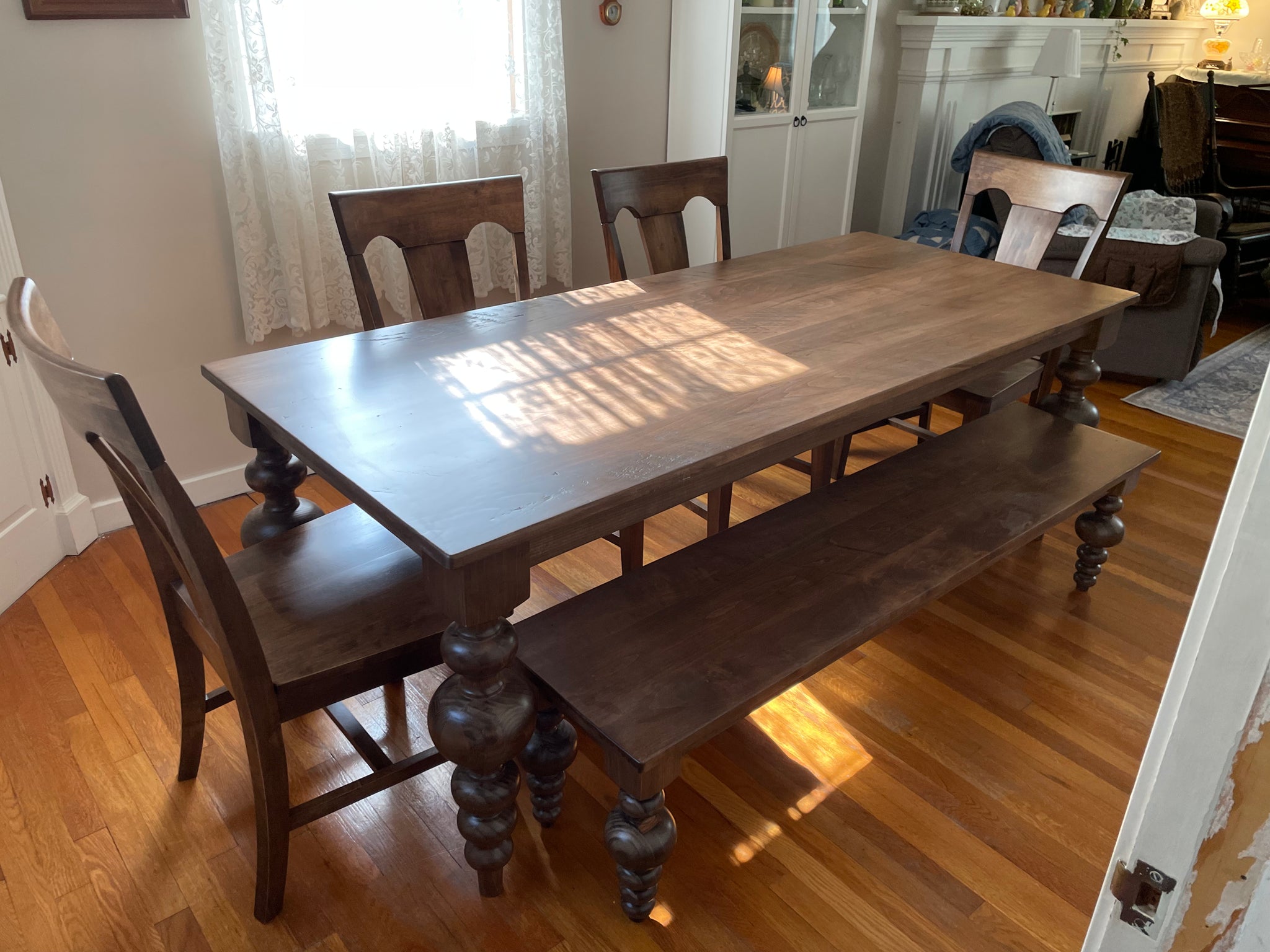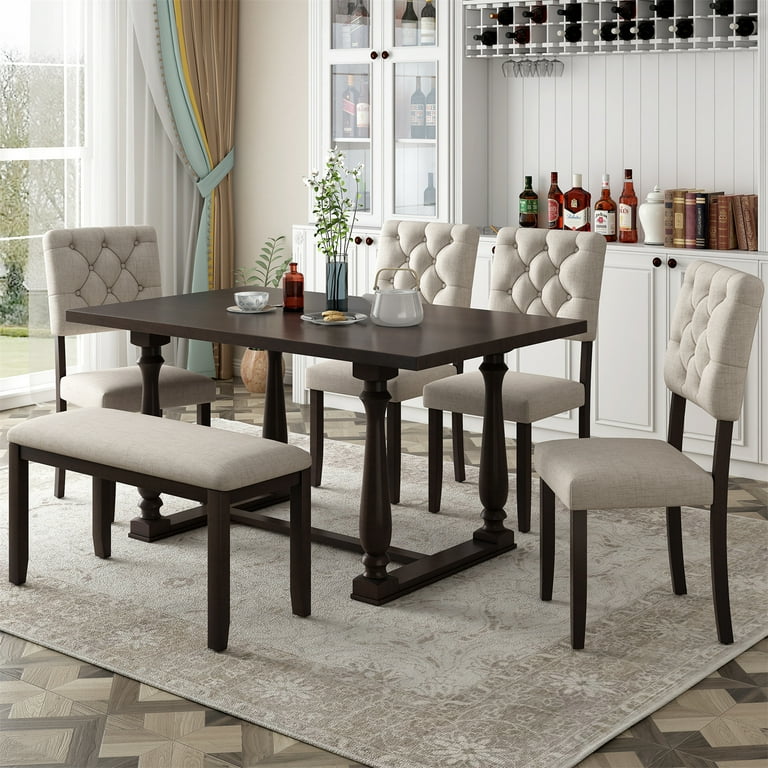The Impact of Dining Room Table Legs on Your Table's Overall Design
The Impact of Dining Room Table Legs on Your Table's Overall Design
Blog Article
Exactly How to Choose the Perfect Dining-room Table Legs for Your Home Décor
Picking the perfect dining room table legs is a nuanced procedure that calls for cautious consideration of different aspects, including your space constraints, visual choices, and useful demands. The interplay between products, designs, and dimensions can significantly affect the atmosphere of your dining location, making it crucial to approach this choice systematically.
Assess Your Dining Space
Analyzing your eating area is essential for picking the right table legs that enhance both aesthetics and capability. Begin by determining the measurements of your eating area, including ceiling height, flooring space, and closeness to other furnishings. This information will aid establish the proper size and height of your table, which directly affects the selection of table legs.
Next, think about the design and design of your dining area. As an example, an open-concept design may gain from table legs that supply visual lightness, such as slim steel or acrylic options. On the other hand, an extra traditional setting could ask for durable wood legs that provide a sense of durability.
Evaluate the existing color palette and materials in your dining area. Integrating the table legs with these aspects develops a cohesive look that boosts the general decor. Additionally, consider the capability called for in your space. For example, if you regularly host big events, take into consideration legs that give extra support and stability.
Ultimately, a complete analysis of your eating space will guide you in making an informed choice, making certain that your table legs not just improve the visual appeal yet additionally serve useful purposes.
Consider Your Design Preferences
When selecting dining-room table legs, it is vital to reflect on your individual style choices, as they considerably affect the general aesthetic of your eating area. Your choice of table legs can either complement or comparison with existing design, making it important to align them with your recommended interior decoration motif.
If your home leans in the direction of a modern visual, think about sleek steel or minimalist wood legs that give a tidy, clean look. For an extra traditional strategy, elaborate wood legs with complex carvings can include a touch of elegance and refinement. Industrial designs take advantage of durable, raw products such as redeemed wood and steel mixes, reflecting a tough charm.
In addition, farmhouse and rustic styles usually favor tough, chunky legs that stimulate a sense of warmth and convenience. Conversely, if your design is eclectic, you might pick unusual forms or a mix of products to develop aesthetic interest.

Evaluate Product Options
The selection of product for dining room table legs plays an essential function in both durability and visual allure. Usual materials include wood, metal, and composite choices, each offering unique attributes that can affect the total appearance and long life of your table.
Timber is a classic choice, known for its warmth and adaptability. Woods like oak and walnut supply phenomenal toughness and can be ended up in numerous discolorations to match any kind of style. Softwoods like want are a lot more susceptible to dents and scratches, making them much less ideal for high-traffic locations.
Steel legs, commonly crafted from steel or aluminum, exhibit modernity and industrial charm. They are immune and highly durable to use, making them appropriate for households with children or constant events (dining room table legs). Furthermore, metal can be ended up in numerous shades, boosting the personalization possibilities
Composite products, such as MDF or laminate, offer price and diverse styles. While more normally less sturdy than strong wood or steel, they can still supply a trendy look and are commonly simple to maintain.
Inevitably, the material you pick must align with your way of living, aesthetic preferences, and the level of usage your dining table will certainly experience.
Determine Height and Dimension
Selecting the ideal elevation and dimension for your dining-room table is important for both capability and comfort. The typical height for eating tables normally ranges from 28 to 30 inches, permitting sufficient legroom for most individuals when seated. It is vital to think about the measurements of your eating space and the kinds of chairs you intend to use.

Furthermore, consider the proportions of your dining room. A larger table in a large location can produce a grand setting, while a smaller sized table functions well in more intimate settings. Ultimately, the ideal elevation and dimension will certainly balance with your general decoration and enhance the dining experience for you and your guests.
Explore Personalization Opportunities

Furthermore, the style of the legs can be personalized to fit numerous designs, such as rustic, modern-day, or commercial. Conical legs can stimulate a mid-century modern feel, while chunky, block-style legs might reverberate with typical or farmhouse style.
Homeowners can additionally discover color surfaces, from all-natural timber spots to paint, enabling them to match or contrast with the tabletop and bordering style.
Furthermore, leg elevation can be gotten used to accommodate specific seating setups or individual choices, improving both comfort and performance.
Finally, one-of-a-kind decorations, such as carvings or decorative braces, can even more individualize the table legs, making the eating experience not just look at this now a meal but a statement item in the home. By thinking about these personalization options, home owners can develop a dining-room table that truly reflects their uniqueness.
Verdict
Choosing the ideal dining space table legs needs mindful factor to consider of numerous variables, consisting of the measurements of the eating area, style preferences, product longevity, and wanted height. Personalization alternatives even more boost the capability to accomplish a cohesive aesthetic that enhances the total style. By systematically evaluating these components, house owners can guarantee that the chosen table legs not just accomplish practical demands however additionally contribute positively to the dining experience and atmosphere of the home.
Selecting the ideal eating space table legs is a nuanced procedure that calls for cautious consideration of various elements, including your space constraints, visual choices, and practical requirements.Analyzing your eating room is crucial for picking the right table legs that enhance both looks and functionality.When establishing dimension, gauge the location where the table will be positioned to guarantee it fits comfortably, enabling for at least 36 inches of clearance from this source around the table for simple activity. A bigger table in a spacious area can create a grand atmosphere, while a smaller sized table works well in even more intimate settings.Selecting the optimal eating space table legs requires careful consideration of numerous elements, consisting of the dimensions of the dining area, style choices, product toughness, and desired elevation.
Report this page